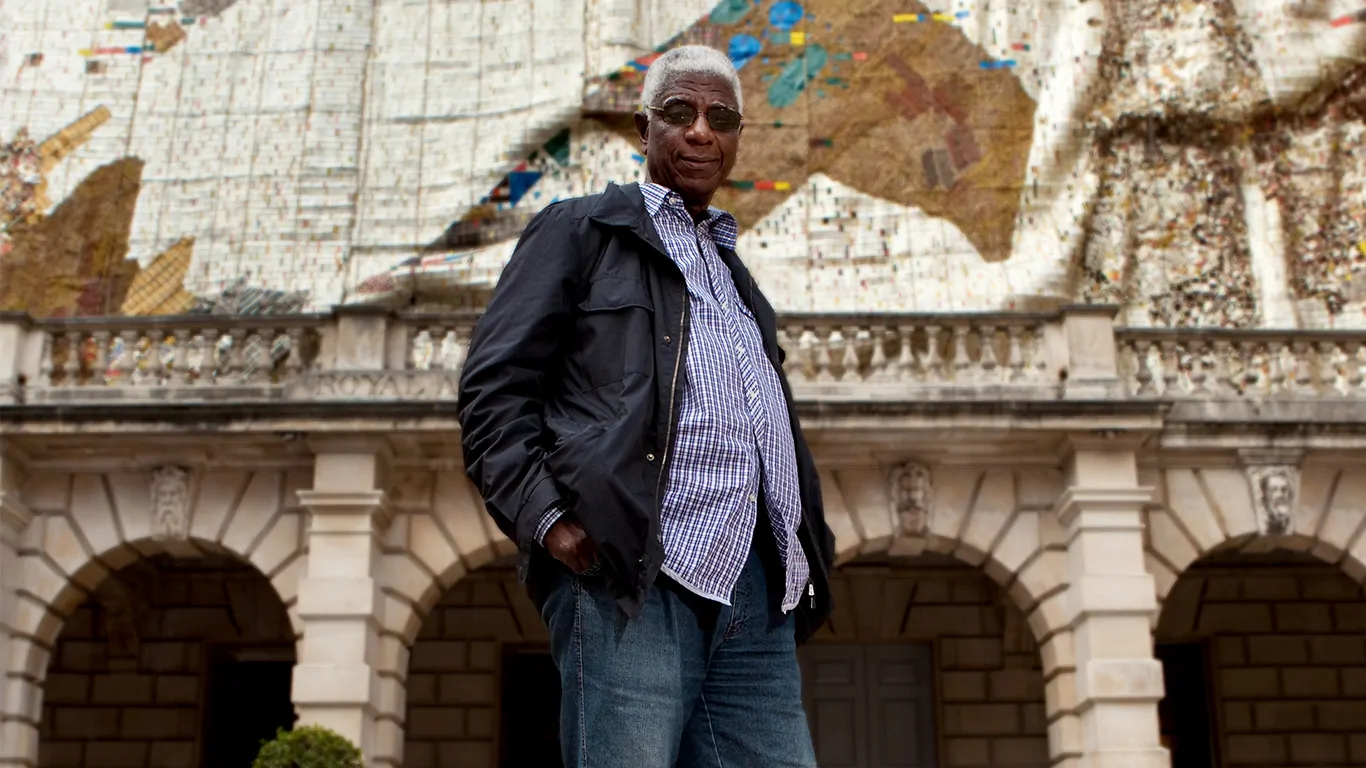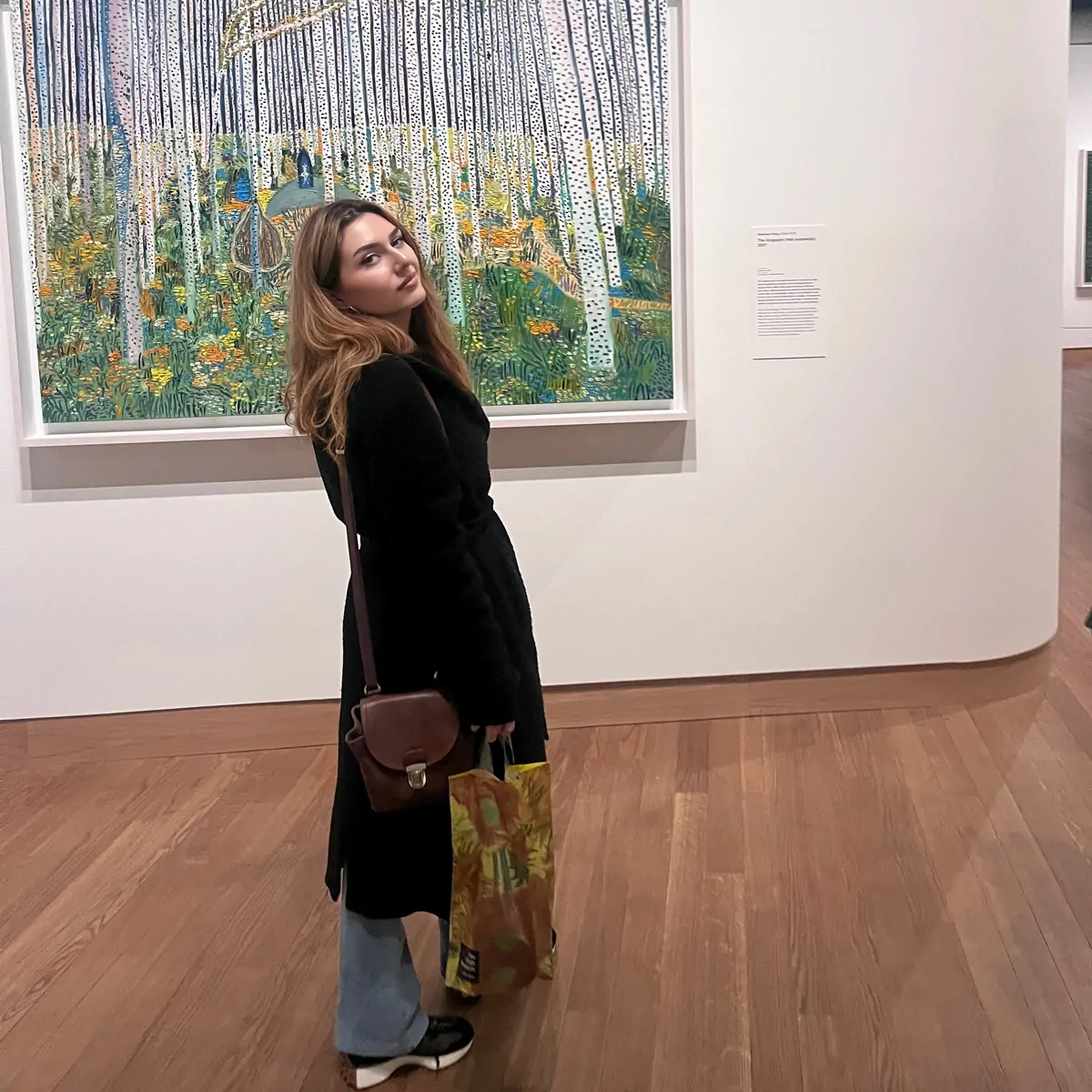In revisiting wood, El Anatsui reopens a conversation with Sankofa and with his own artistic past — shaping sculptures that turn memory, history and transformation into living form.
El Anatsui’s return to wooden sculpture feels almost inevitable. His new pieces in Go Back and Pick — a two-part exhibition spanning October Gallery and Goodman Gallery — revisit his early experiments with wood from the 1970s, reopening a dialogue with the Ghanaian principle of Sankofa: that one must return to the past in order to move forward.
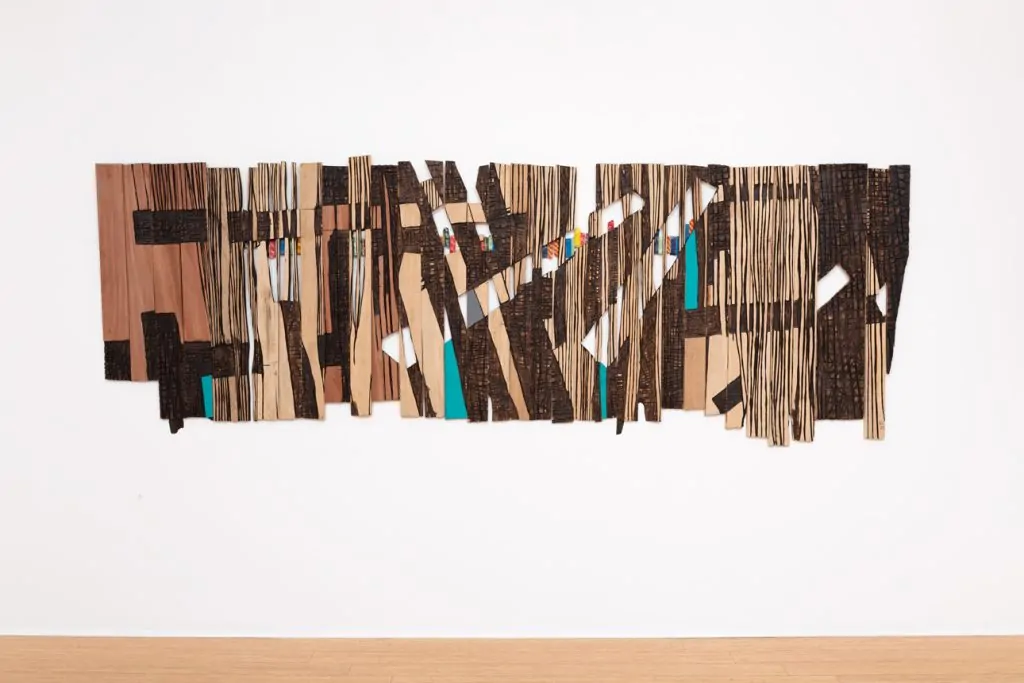
Conjugation, 2024
Tropical hardwood and tempera
,124 x 370 cm
© El Anatsui.
Courtesy the Artist and October Gallery.
Photo © Jonathan Greet.
In these works, Anatsui’s materials speak first. Charred surfaces, carved Adinkra symbols, and textured grains recall the tactility of memory itself — imperfect, marked, layered. Each piece feels as though it has absorbed a history, standing as a silent witness to the unseen lives of the materials. Burns, cuts, and scars make time legible rather than obscuring it.
The works resist monumentality. Instead of fixed forms, they hover between states, reconfiguring depending on how they occupy the room. This sense of openness — of forms still in flux — evokes the way memory moves through us: uneven, cyclical, at times fragmented, yet always alive. The past and present seem to dance in an outgrown reflection, quietly weaving together experience and history, bringing a calm clarity into the now.
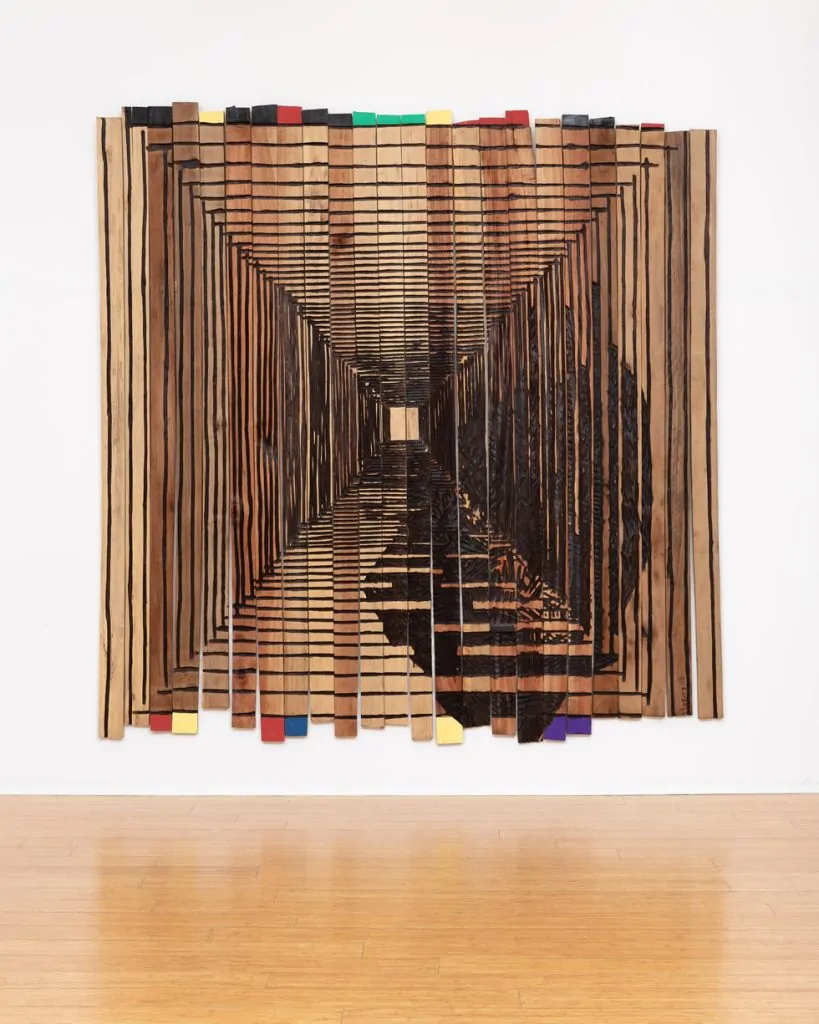
Passage of Time, 2023.
Tropical hardwood and tempera,
244 x 244 cm
© El Anatsui.
Courtesy the Artist and October Gallery.
Photo © Jonathan Greet
Anatsui’s return to wood, after years of working with discarded bottle caps and metallic tapestries, reads as a deliberate act of grounding. The medium carries its own archive — growth rings and decay serving as living records. While his earlier metal works spoke of global circulation and consumption, these wooden sculptures turn the gaze inward, toward organic transformation itself.
The Adinkra symbols carved into several panels act as visual anchors: fragments of a cultural language once suppressed under colonial education. By reinscribing them into contemporary abstraction, Anatsui makes visible a continuity that was never fully erased — a dialogue between lost epistemologies and present urgencies. The works adapt tradition, testing its capacity to evolve without losing essence.
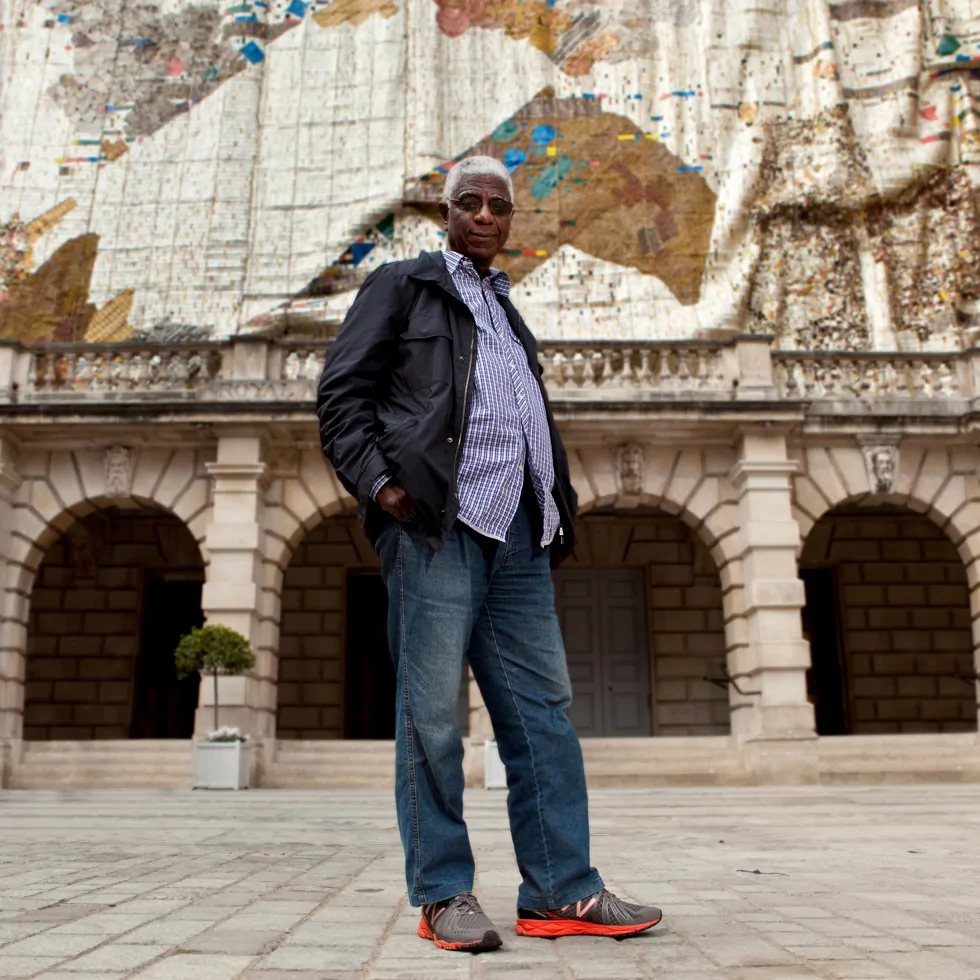
Photo Jonathan Greet
There’s a quiet insistence in Go Back and Pick: that innovation does not demand severance from what came before. The work suggests that progress may lie not in perpetual novelty but in recognition — in revisiting what was left unfinished and allowing it to reconfigure the present.
Anatsui’s sculptures, with their uneven surfaces and mutable arrangements, hold this lesson within their form. They move with light and shadow; their textures absorb and reflect, refusing singular interpretation. In doing so, they propose a visual language of flexibility — a refusal to let meaning harden.
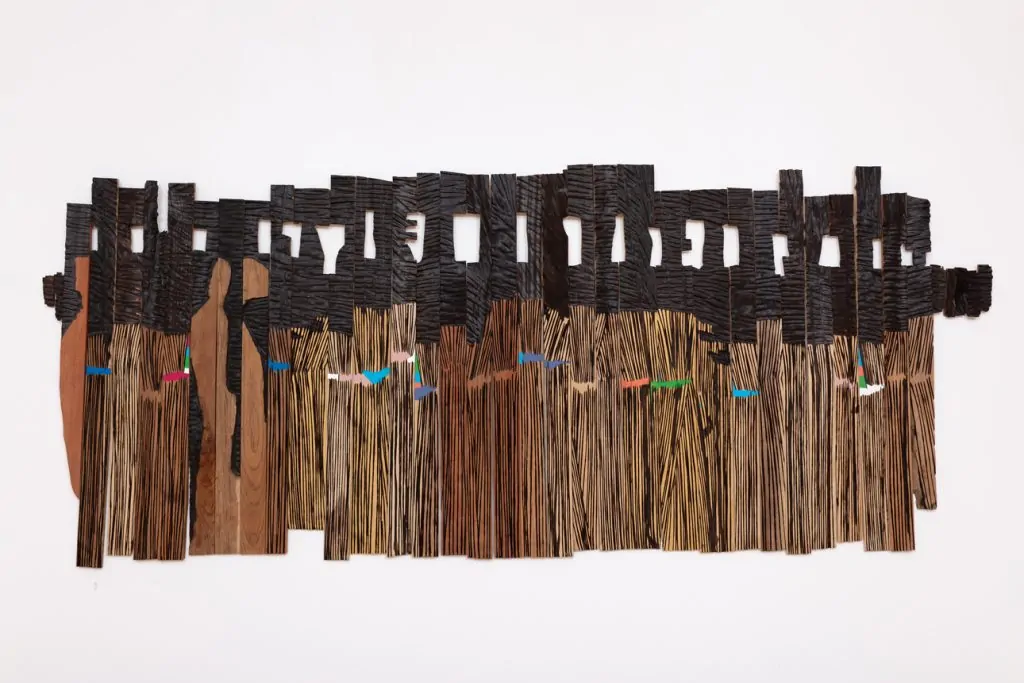
.Tropical hardwood and tempera
159 x 376 cm
© El Anatsui.
Courtesy the Artist and October Gallery.
Photo © Jonathan Greet
Ultimately, Go Back and Pick invites reflection not on history as something to master, but as something to inhabit. In these works, the act of looking backward becomes inseparable from imagining forward. The result is a body of work that doesn’t merely represent time — it performs it.
©2025 El Anatsui


